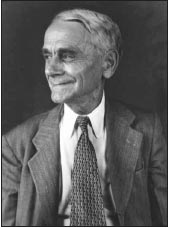Evangelist of Pentecostalism: The Rufus Moseley Story
Church historian William De Arteaga introduces an important but often forgotten figure that God used to prepare many for the Charismatic Renewal.

J. Rufus Moseley
If there was no Rufus Moseley, there might not have been a Charismatic Renewal. Born in 1870 and died in 1954, J. Rufus Moseley was one of the most important, but largely forgotten evangelists for Pentecostalism. Without his ministry and influence, perhaps the Charismatic Renewal would not have occurred, or at least not in the 1960s-1970s.
Moseley brought Pentecost to the mainline churches indirectly, but decisively, by his work through several para-church organizations. Birthed in the 1930s, these organizations formed in reaction to the stultifying anti-supernaturalism and cessationism of mainline Protestantism. During the 1920s and 1930s, theological liberalism was at its height. The shift was so strong, so unrelenting that many Christians were even doubting the effectiveness of prayer.[1] That was the natural outcome of living and being taught in cessationist churches where no one saw a miraculous healing or supernatural event because no one prayed in faith for those things.
During this era of spiritual drought, four para-church organizations were paramount in upholding the Biblical understanding of prayer, the veracity of the Bible, and the present manifestations of the miraculous and healing prayer. They were, the Christian Ashram Movement of Eli Stanley Jones (1884–1973), Dr. Albert Day’s Disciplined Order of Christ (Methodist), the Rev. John Gaynor Bank’s Order of St. Luke (originally Episcopalian), and especially, the Camps Furthest Out (CFO), an interdenominational group founded by Professor Glenn Clark.[2]
If there was no Rufus Moseley, there might not have been a Charismatic Renewal.
Moseley added a Pentecostal dimension to these groups. His Pentecostalism was not based primarily on a study of classical Pentecostal writings that came out of the Azusa Street Revival, but on his own dramatic experience with the resurrected and glorified Jesus in 1910. It was a “mystical” encounter. Some Evangelicals are suspicious of the word, but all it means is a direct and intimately personal spiritual experience.[3] Moseley’s experience was very similar to that of the great 19th Century evangelist Charles Finney – it was a sudden, unexpected immersion and union with the Risen Lord. After Moseley’s encounter with Jesus he manifested the gifts and fruits of the Spirit to an unusual degree. He lived a life of anointed teaching, sacrificial love and generosity that impressed all who met him.
A life of preparation
J. Rufus Moseley was born on August 29, 1870 into a devoutly Christian farming family in the mountain town of Elkin, North Carolina. His father, a veteran of the Civil War, had a reputation for absolute integrity and kindness in all his dealings. Rufus recounted:
When he offered for sale, or in trade, a horse or a mule, he first told its faults to the full. When he took a load of watermelons to sell, he sought to have the larger ones at the bottom instead of the top.[4]
Category: Church History, Fall 2017


